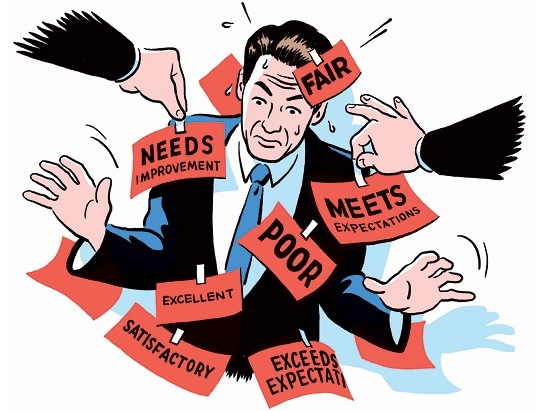Marcus Buckingham and Ashley Goodall stirred the pot in their April 2015 Harvard Business Review article, “Reinventing Performance Management.” Deloitte has eliminated the performance review. In July 2015, Accenture’s CEO, Pierre Nanterme, has eliminated the performance review. Is this a pattern that will be adopted by other large and mid-size companies?
It’s a powerful statement to proclaim “no more performance reviews.” The concept of removing measures of mediocrity is important. Measuring ‘average’ doesn’t drive top talent and doesn’t inspire even average talent which plagues your company today. As companies compete for top talent incentives are changing. They have to, because existing methods are not able to retain great employees. It’s no longer ‘good enough’ just to pay them more, or provide constructive feedback. They need engagement: welcome the introduction of the millennial into the workforce.
Real Talent Drivers
It’s great to hear that Deloitte is changing the performance management process (a sampling population of 1,954 or 3% and average error rates of 5% is problematic). Regardless, variable compensation tends to restrict human capital development. Is this new? In any event, we do know what top performers stay, and why they leave. We know that the number one factor good people leave companies is horrible leadership. It’s not only incompetent leadership, which is all too pervasive. Great employees leave because their beliefs, values and the company mission had changed from what they thought or bought into when they initially joined.
Top leaders (employees) are looking for three things:
- Autonomy – have control in what you do
- Mastery – focus on your strengths
- Purpose – feel (emotion) you are making a positive difference
Measuring Employees
How is the return on human capital (RoHC) measured? One measurement is effectiveness. For example, how an employee is rated, 360 reviews, or alignment to predetermined evaluation criteria. A second measurement is efficiency or example time spent on tasks (project accounting) or overall hours spent by employee. Neither of these measures value created.
Employees Work with You, Not For You
In 2014 David Williams, wrote in Forbes three reasons to abolish employee reviews: 1. They focus on the negative 2. An employee never forgets a bad review experience. 3. Employees are asked to rate themselves, often never above a 3. Williams presented Eleanor Roosevelt who reminds us, “No one can make you feel inferior without your consent.”
You own the decision. You as the employee, whether you’re way down reporting to someone else way down or the CEO reporting to the board, can decide who to work with. Often employers and managers forget this. Average employees may stay, the great ones will leave. They won’t ask permission: just tomorrow they will be gone.
Questions of Root Deduction
How were teams selected for the control groups?
Were team selected randomly, taking into account low performance teams and high performance teams, or were the teams selected from above average teams?
If the sampling population is from a distribution that were mostly high performers, how does this impact the survey results?
Does this logic apply outside of Professional Services that was sampled?
Overall, the lack of performance improvement evidence is significant. Without more historical data on performance trends it’s presumptuous to assume value was driven out of a process that is not measured or quantified. As mentioned this would be similar to proclaiming the benefits of a new FDA drug that actually was still undergoing tests and actually only a pharmaceutical drug candidate.
All too often large organizations incentive managers to review employees as low as possible. We say this never happens, but we all know this is a lie we tell ourselves. The real corporate goal of human resource management is how to get the greatest employee production for the least possible reward.
Everyone is Replaceable – or Are They?
Everyone can be replaced. But not everyone is replaceable. If you have a new requisition for a job, you can hire anyone into that role. Of course you can, but this is a classic misnomer. There is no guarantee they can or will do the role as effectively as the former person in that role.
Amy Anderson, her Forbes article ‘Great Employees Are Not Replaceable” touched on this well. She stated that, “One of the most important lessons I learned during my years as a CEO was that great employees are not replaceable. It isn’t the technology or the product that make a company great, it’s the people.” Great employees hold key relationships or established critical influence or hold institutional knowledge or knowledge of future products not yet even development. This can’t be replaced. The top CEO know this. The bad or average CEO’s don’t.
The End Game
It’s a start towards change. The goal is keep the ‘good to great’ and get rid of the rest. We could frame this more eloquently but it’s the gist of the intent. If we know that autonomy, mastery and purpose drive employees, especially the great talent, why wouldn’t we start there? Buckinghan and Goodall redefined normal, it will be fun to observe as others follow.
“A flower does not think of competing to the flower next to it. It just blooms.” – Zen Shin
References:
Anderson, A. R. (2013). Great Employees Are Not Replaceable. Retrieved August 12, 2015, from http://www.forbes.com/sites/amyanderson/2013/02/13/great-employees-are-not-replaceable/
Buckingham, B. Marcus, & Goodall, Ashley. (2015). Reinventing Performance Management. Harvard Business Review. Retrieved from https://hbr.org/2015/04/reinventing-performance-management
Cunningham, L. (2015). Accenture CEO explains why he’s overhauling performance reviews – The Washington Post. Retrieved August 11, 2015, from http://www.washingtonpost.com/news/on-leadership/wp/2015/07/23/accenture-ceo-explains-the-reasons-why-hes-overhauling-performance-reviews/
Suddah, C. (2013). The Annual Performance Review: Worthless Corporate Ritual (Online Image). Retrieved August 12, 2015, from http://www.bloomberg.com/bw/articles/2013-11-07/the-annual-performance-review-worthless-corporate-ritual

